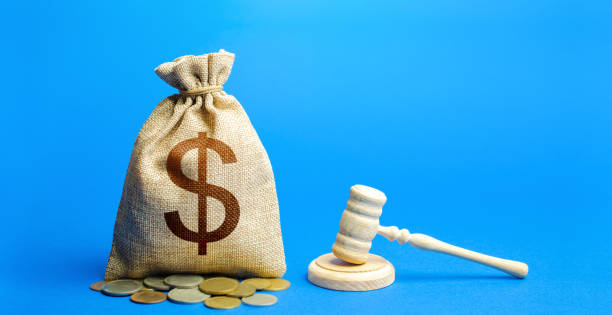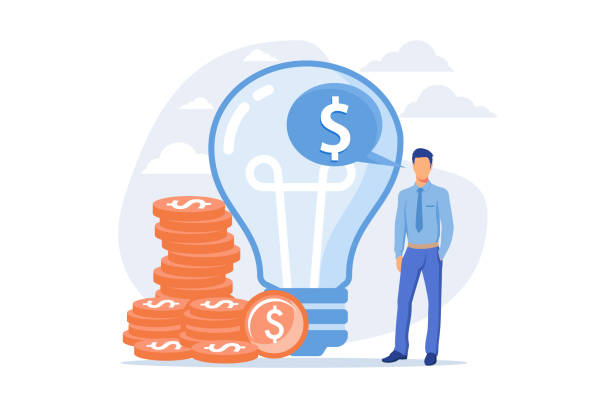When filing a non-provisional patent application, there are various costs to take into account. Being aware of these expenses can help you make informed decisions regarding whether to pursue a patent or not.
Exam fees are one of the most crucial expenses to factor in when planning your budget. Delaying these charges can save you money in the long run.
Inventor’s Fees
Inventor’s fees are the expenses an inventor pays when applying for and receiving a patent. They depend on how long it takes to prepare the application and file it with the patent office and can range anywhere from several thousand to over one hundred thousand dollars depending on the complexity of the invention and/or need/ability to secure broad patent protection.

Inventor’s fees are typically the first payment an inventor makes in order to secure their rights to their invention. This is because it takes extensive research and diligence to verify that an invention is truly unique and not already in use.
Many inventors opt to sell their invention to a company or other party that will pay them a royalty for exclusive rights to manufacture and market the product. While this can be an advantageous route for entrepreneurs, it also comes with its own set of risks and difficulties.
Another option is working for a company that employs inventors. Companies often have their own rules and regulations regarding inventions created by employees, so this type of contract, commonly referred to as “work for hire”, can be an excellent way to generate income from patents without taking on the risk of selling your own invention.
Before signing any license agreements or contracts with your employer, be sure to double-check their policies regarding how much money they pay you for your invention. They may have restrictions in place that limit how much compensation they will pay you.
Some inventors opt to run their own businesses and manufacture and market their own products. While this can be a lucrative venture, it requires an enormous investment of time and energy from you.
Finally, some inventors opt to forgo filing a provisional patent application and file a non-provisional one instead. While this can save them money, their invention won’t be fully protected by patent law.
There are various types of inventor’s fees and their cost can vary considerably between companies. The only way to accurately determine how much it will cost you is to speak with an expert who specializes in this area.
Patent Attorneys Fees
A patent attorney is a professional who can guide inventors through the patent process and safeguard their inventions. These legal professionals usually have undergone law school and are licensed to practice law. The cost of hiring a patent attorney varies based on how complex and technical an invention may be.
Before filing a non-provisional patent application, it’s essential to determine how much it will cost. This includes attorney fees, filing, and USPTO fees, as well as examination charges.
The amount spent will depend on how many drafts and attorney billing hours are necessary. Inventors should budget at least $5,000-$15,000 in attorney fees to get their patent applications filed and accepted by the USPTO.

Inventors should also factor in the cost of non-provisional patent maintenance fees, which must be paid at set intervals throughout its lifespan. These fees guarantee that a patent remains active and protects an invention.
For instance, owners of utility patents must pay maintenance fees at 3-3.5, 7-7.5, and 11-11.5 years after the issuance date to ensure protection for their invention. These payments can be made electronically via the Patent Center or EFS-Web.
Most applicants opt for a non-provisional patent application. These applications require more detail, formality, and time than provisional patent applications and typically need to be written by an experienced attorney with the submission of drawings.
Additionally, a non-provisional patent application requires a full claim set. This step is essential in safeguarding an invention since it establishes the legal foundations for rights and ownership in an invention.
A high-quality non-provisional patent application can range in cost from $7,000 to $20,000. The exact figure will depend on the type of utility patent filed and which firm you work with.
Patent Examiners Fees
Patent examiner’s fees are costs associated with the long-term process of obtaining a patent. They cover both short-term expenses such as preparing and filing an application to establish pendency, as well as ongoing costs that arise during examination of that application in order to grant you your patent.
Throughout the lengthy and costly patent process, your invention will be reviewed by several different patent examiners. Therefore, it is highly recommended that you hire a patent attorney for assistance with filing your patent application.
A patent attorney is highly knowledgeable about the patent prosecution process and can assist you with responding to all office actions generated during its prosecution. This includes responding to rejections (office actions) as well as engaging with patent examiners regarding their responses to your application.
Office actions are sent to patent examiners for review and can range from basic inquiries about your invention to detailed explanations of why a patent was denied. Your patent attorney can analyze these office actions and provide you with a legal brief that addresses any objections raised by the examiner and upholds your rights.
In addition to responding to the examiner’s response, your patent attorney may need to submit amendments or file other paperwork in order to address their concerns. In such instances, additional fees may be charged in order to complete all necessary work and address all concerns raised by the patent examiner.
Fee structures can be complex and tailored to the particulars of your application. A patent attorney can assist you in understanding these fee structures and selecting the most advantageous course of action in light of your individual situation.
Your patent attorney can also craft the patent application in a way that increases your chances of approval from the USPTO. This service is especially beneficial for inventors who lack the time or expertise to craft their own applications.
A full patent application consists of a comprehensive specification and set of claims that define the scope of protection for your invention. These documents usually also include several drawings to demonstrate their novelty and inventiveness. These records are essential in court as evidence.

Patent Office Fees
Patent Office fees can be an integral component of the overall cost to acquire a patent. The USPTO charges fees for filing patent applications, searches, examinations, and maintenance. These charges must be paid from the time an application is filed in order to secure your patent approval.
Fees for patent applications differ according to the type, but are usually divided into three categories: Original Patent Filing Fees (Base Fees), Additional Patent Filing Fees, and Maintenance Fees. Furthermore, these charges may also include applicable surcharges.
With all fees included, the total cost of a non-provisional utility patent application ranges from $1,800 to $3,500 over one to 1.5 years. This includes fees for preparing specifications, claims, and drawings as well as filing the application electronically through EFS-Web or the new Patent Center system.
Alternatively, applicants can submit paper applications via mail or hand delivery; however, they will have to pay an additional $400 in non-electronic filing fees on top of the regular application filing, search, and examination costs. These additional costs are reduced by 50 percent for those qualifying as small entities or micro entities.
Another option is to pay a higher fee for an optional preliminary search and opinion, which does not replace examination but can help determine if your invention deserves patenting. Unfortunately, this service is only available for those with valid patent applications and it is not guaranteed that it will be granted.
Finally, annual patent renewal fees must be paid in order to maintain your patent’s validity. These fees become due every three years following filing, and if not paid promptly, your patent will expire.
The cost of a patent can vary significantly depending on the inventions being protected and whether or not an inventor wishes to protect their rights in Ireland or abroad. It is essential that you obtain a firm price quote before engaging with a patent attorney. Request a written estimate that details all costs associated with preparing and filing your application as well as any subsequent responses to Office Actions or other Patent Examiner’s actions on the merits.
Conclusion
While the fees associated with filing a non-provisional patent application may seem daunting at first, it is crucial to understand that they represent an investment in protecting one’s intellectual property rights. The fees for filing a non-provisional patent application typically include various components such as filing fees, search fees, examination fees, and maintenance fees. These costs can vary depending on factors such as the complexity of the invention, the size of the entity filing the application, and the jurisdiction in which the application is filed. It is essential to consult the official fee schedules provided by the relevant patent office to determine the precise costs involved.
